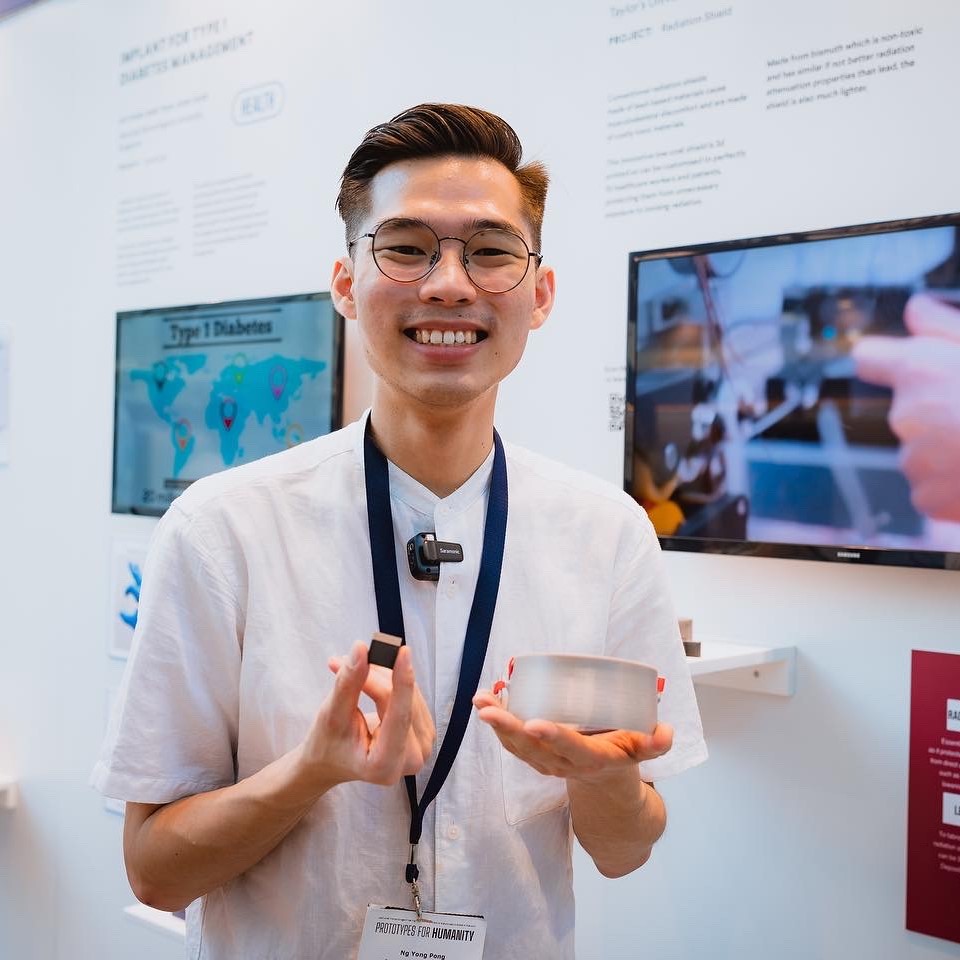What it does
Introducing BraillePad: an affordable, customizable 3D printed tablet-like device for the visually impaired, revolutionizing learning with accessibility and solving manufacturing issues. A pioneer in self-learning for the visually impaired.
Your inspiration
During our medical school ophthalmology posting, we visited the Malaysian Association for the Blind (MAB) and saw the challenges in traditional Braille book production. It was labor-intensive, time-consuming (3 months for a single book production), expensive, and limited resources for students preventing them from having personal copies of textbooks. Limited career pathways for visually impaired students and their lack of personal textbooks hindered education. Motivated by these issues, we conceived BraillePad - a solution to revolutionize Braille book production, offering personalized, affordable, and accessible self-learning.
How it works
There are two parts for BraillePad, they are the device and the book translated braille sheets. The device consists of a chassis, reading area and page indicator integrated page cartridges. Orientation indicators are on the upper right side of both reading area and chassis. A one-time assembly of sliding the reading area into the chassis in right orientation is initially required. Users will load book translated braille sheets into the page cartridges, load the cartridges into the storage area, and carry securely after closing the hinge door on the chassis. To read with the BraillePad, the user opens the hinge door and pulls the braille sheet loaded cartridge. Chassis orientation indicator serves as an alternative cartridge slide out method. User then takes the braille sheet and slides into the reading area. User can close the hinged door which prevents all cartridges and sheets from falling out and start reading through the user's sense of touch.
Design process
Conceive Design Implement Operate Design thinking framework was used to replace traditional braille books. To allow customization, 3D printing was explored. Due to 3D printers being a luxury to most visually impaired, during the conceive phase the dimension of BraillePad was designed to print with the affordable 3D printer, the Creality Ender 3. Sketches for BraillePad emphasizing the braille sheet reloading system were drawn. Sleek wallet designs were researched to ensure braille sheets are stored securely. For design phase, Computer Aided Design (CAD) was used. Designs were drawn and test printed, to improve ease & firmness of reading area assembly and chassis hinged door design. Page cartridges have built in page indicators, integrated into a finger sliding design. Cutout area on the right side was modified to save total printing time while simplifying the braille sheet removal procedure. For implementing stage, an initial prototype that only stored 2 braille sheets with a braille-translated storybook Tortoise and Hare was brought to MAB. 3D printing parameters for braille sheets were amended according to braille reader feedback, to improve tactile sensation and increase user comfort reading long hours. The final design requires minimum support and is material efficient.
How it is different
Our solution utilizes 3D printing technologies to enhance braille book production. The current braille book production process is time-consuming, costly, heavy and bulky. BraillePad aims to address these drawbacks. Firstly, BraillePad is a complete design developed in close collaboration with visually impaired children aiming to deliver an exceptional user experience. Next, it offers a time and cost-effective production process compared to traditional printing by eliminating manual handwork in embossing each braille character in books. Besides, its lightweight and portable design solves the issue of bulky Braille books. Lastly, BraillePad allows customization of study materials to meet individual needs. The team can translate and print customized materials on demand, extending this service to items like notebooks, greeting cards and exam papers. These features promote independent learning and create an inclusive educational experience for the visually impaired.
Future plans
BraillePad will be introduced to the Malaysian Association for the Blind and Ministry of Education in hopes of making it accessible for visually impaired students in school, who currently face challenges with existing Braille books. Thus, our next goal is to bring BraillePad to market as a social enterprise. To achieve this, we are collaborating with Bizpod, our university startup advisors, to facilitate the commercialization of BraillePad. The next steps include patenting our design, securing funding for further development, and incorporating additional features to enhance user experience and inclusive education for the visually impaired.
Awards
We have achieved 2nd place ($15,000) in Medical Grand Challenge Singapore 2022, Gold & Special Award in Malaysia Technology Expo Asian Youth Innovation and best use of 3D Printing award in Autodesk Make:able 3D printing Challenge 2023. Till date, featured in The Star, China Press, Marketing Magazine Asia, Tatler Asia.



Connect